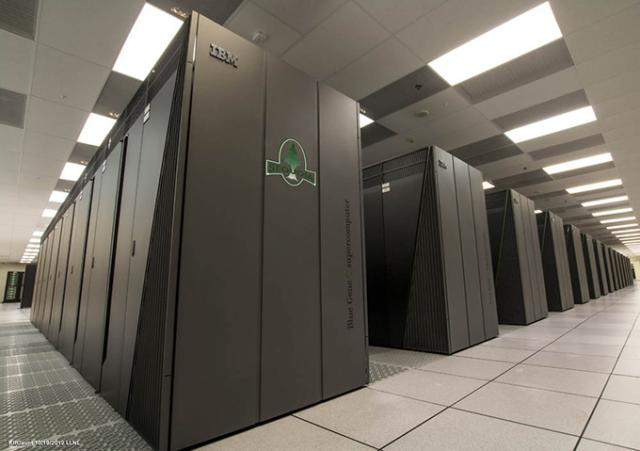Scientists at Stanford Engineering’s Center for Turbulence Research (CTR) have managed to set a new record in computational science.
Indeed, the researchers successfully used a supercomputer with more than one million computing cores to solve a complex fluid dynamics problem – the prediction of noise generated by a supersonic jet engine.

Joseph Nichols, a research associate in the center, worked on the newly installed Sequoia IBM Bluegene/Q system at Lawrence Livermore National Laboratories (LLNL) funded by the Advanced Simulation and Computing (ASC) Program of the National Nuclear Security Administration (NNSA).
As you may recall, Sequoia once topped list of the world’s most powerful supercomputers, boasting a staggering 1,572,864 compute cores (processors) and 1.6 petabytes of memory connected by a high-speed five-dimensional torus interconnect.
Due to Sequoia’s impressive numbers of cores, Nichols was able to demonstrate for the first time that million-core fluid dynamics simulations are actually possible, while also advancing research aimed at designing quieter aircraft engines.
“Computational fluid dynamics (CFD) simulations, like the one Nichols solved, are incredibly complex,” explained Parviz Moin, the Franklin M. and Caroline P. Johnson Professor in the School of Engineering and Director of CTR.
“Only recently, with the advent of massive supercomputers boasting hundreds of thousands of computing cores, have engineers been able to model jet engines and the noise they produce with accuracy and speed.”
To be sure, CFD simulations test all aspects of a supercomputer. The waves propagating throughout the simulation require a carefully orchestrated balance between computation, memory and communication.
“Supercomputers like Sequoia divvy up the complex math into smaller parts so they can be computed simultaneously. The more cores you have, the faster and more complex the calculations can be,” said Moin.
“And yet, despite the additional computing horsepower, the difficulty of the calculations only becomes more challenging with more cores. At the one-million-core level, previously innocuous parts of the computer code can suddenly become bottlenecks.”
Meanwhile, Nichols noted that the above-mentioned simulations were a “homecoming” of sorts, as the engineeer was inspired to pursue a career in supercomputing as a high-school student when he attended a two-week summer program at Lawrence Livermore computing facility in 1994 sponsored by the Department of Energy. Back then he worked on the Cray Y-MP, one of the fastest supercomputers of its time.
“Sequoia is approximately 10 million times more powerful than that machine,” he added.
Interestingly, the computer code used in this study is named CharLES and was developed by former Stanford senior research associate, Frank Ham. This code utilizes unstructured meshes to simulate turbulent flow in the presence of complicated geometry.
In addition to jet noise simulations, Stanford researchers are using the CharLES code to analyze advanced-concept scramjet propulsion systems used in hypersonic flight (with video) – flight at many times the speed of sound – and to simulate the turbulent flow over an entire airplane wing.





